#alexander palace
Text
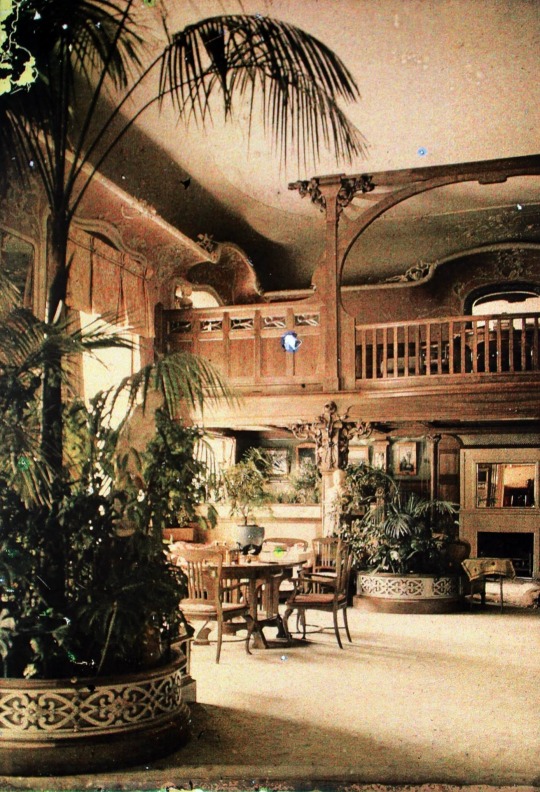





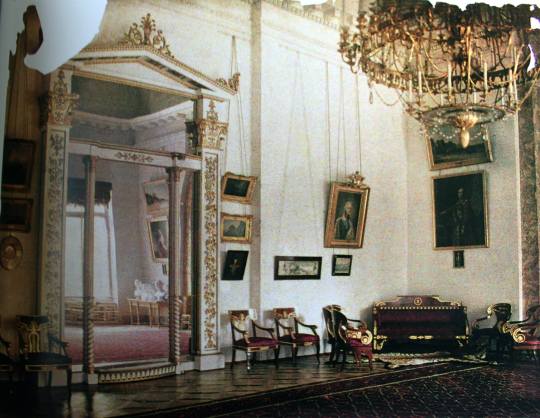



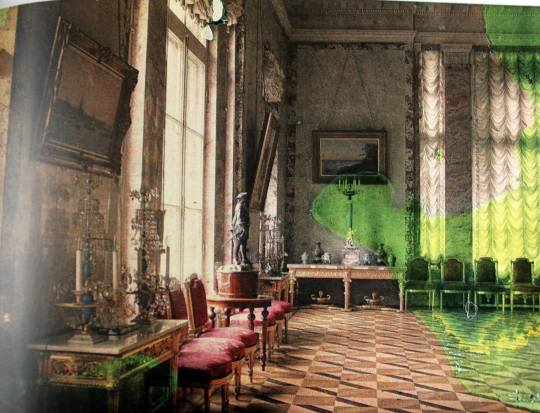

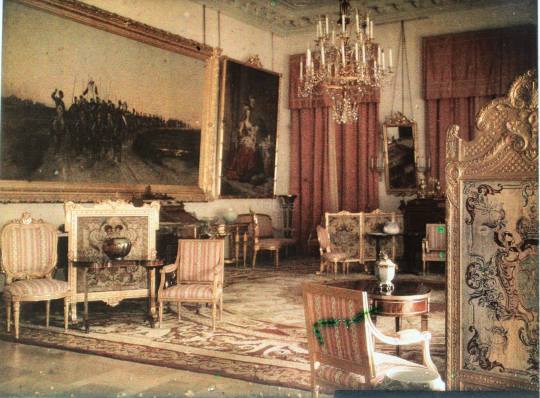
Alexander Palace, Tsarskoye Selo, Russia, 1917,
A rare and unique set of Autochrome color photograph plates, taken by Alexander Zehest in 1917 of the interiors of the Alexander Palace, including both the Parade rooms and the personal rooms of the Imperial Family.
The Autochrome process was a rare and difficult one, invented by the Lumiere Brothers of France in 1903 and marketed in Europe and the US starting in 1907. The autochromes, 140 in total, were made in 1917 by the military photographer Andrei Zeest, who was invited by the art historian George Loukomski, Head of Tsarskoye Selo Inventory Commission. The Alexander Palace interiors were photographed in August-September, soon after the Tsar’s family left for exile.
#art#design#architecture#history#luxury lifestyle#style#luxury house#luxury homes#palace#alexander palace#russia#tsarskoe selo#vintage photography#1917#autochrome#andrei zeest#tsar#imperial#imperial palace#luxuryhouses#luxuryhomes
305 notes
·
View notes
Text

Alexander palace.
94 notes
·
View notes
Text
A very rare photograph of Olga Nikolaevna trying the new automobile, Winter 1916


Also seen are Nicholas and Alexandra, and possibly Alexei Nikolaevich obscured by Nicholas. They are testing out the new Packard Twin Six Model 1-35 Touring Sedan automobile, especially equipped with skis! Poor Olga looks freezing!
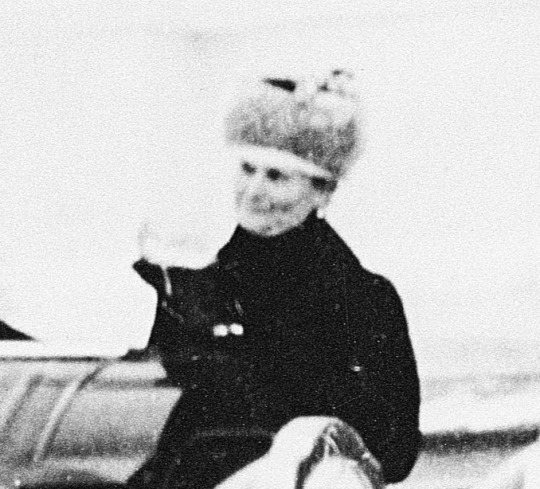

#my own#so happy to have found this!#rare#Olga Nikolaevna#Nicholas II#Alexandra Feodorovna#Alexander Palace#cars#automobiles#Romanov family#Olga Romanov
122 notes
·
View notes
Text


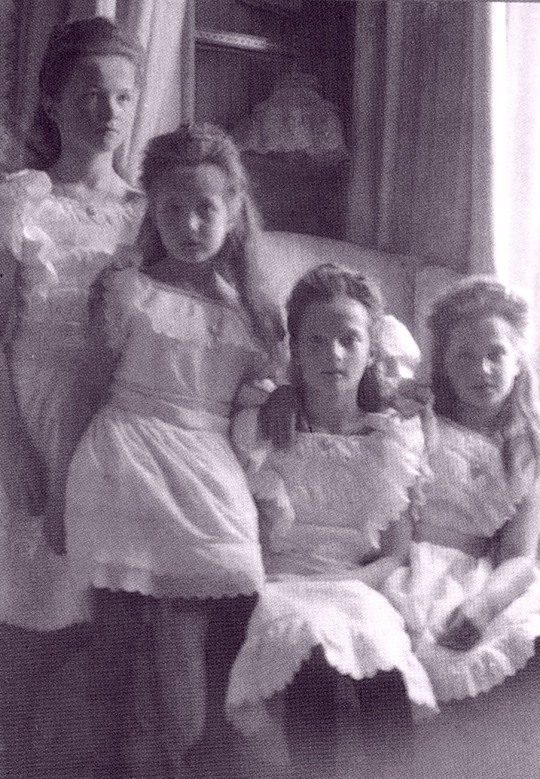


Olga, Tatiana, Maria and Anastasia in the Mauve Room, Alexander Palace 1908.
#otma#romanov#olga nikolaevna#tatiana nikolaevna#maria nikolaevna#anastasia nikolaevna#alexander palace
41 notes
·
View notes
Text
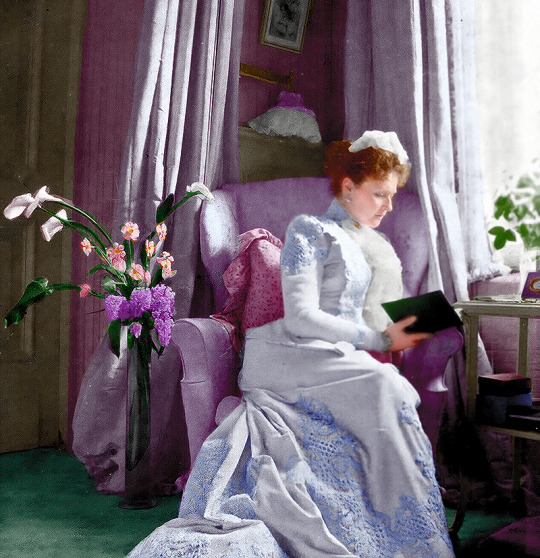
Empress Alexandra Feodorovna of Russia in her favorite Mauve Boudoir, late 1890s.
#Empress Alexandra Feodorovna of Russia#Empress Alexandra Feodorovna#Empress Alexandra#Empress Alexandra of Russia#princess alix of hesse#imperial russia#imperial family#russian imperial family#victorian#romanovs#1890s#colored photography#history colored#1898#1897#mauve boudoir#mauve room#alexander palace
69 notes
·
View notes
Text

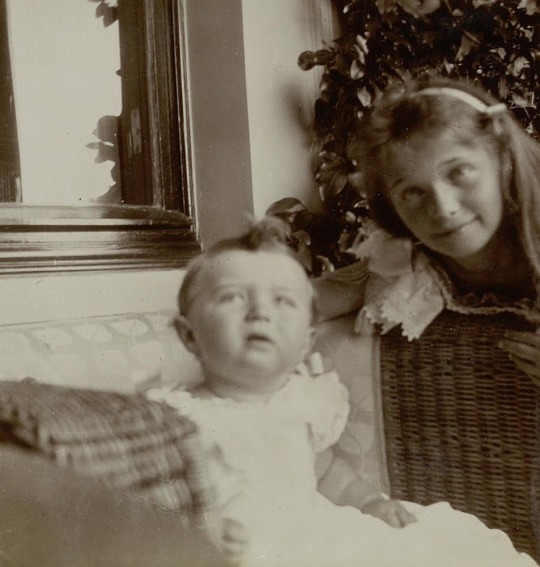

Grand Duchess Olga Nikolaevna of Russia playing with her little brother Tsarevich Alexei Nikolaevich and a camera (also with Maria Pavlovna the younger looking on), 1905 🤍
#such a cute moment!#she loved Alexei so much 🫶#olga nikolaevna#romanov#otma#romanovs#alexei nikolaevich#maria pavlovna the younger#Maria pavlovna#1905#Alexander palace#tsarevich alexei#grand duchess olga nikolaevna#grand duchess Olga#tsarskoe selo
19 notes
·
View notes
Text
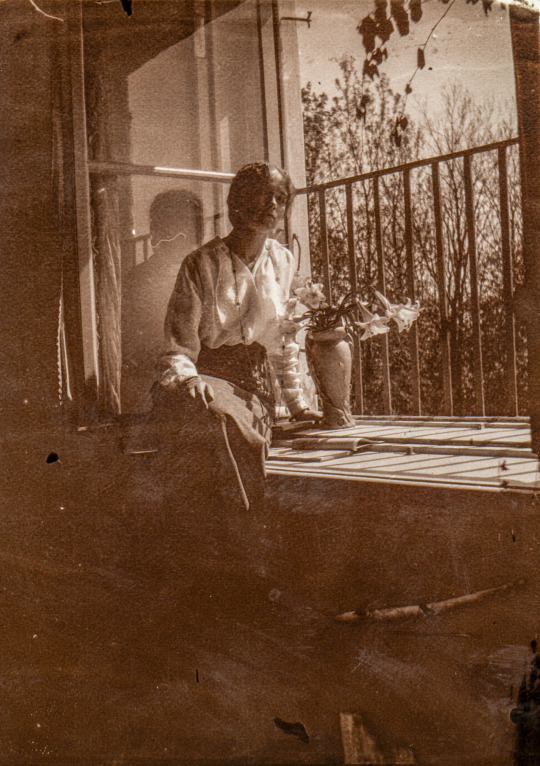
Olga Nikolaevna sitting on the window in the Alexander Palace, May 1917
Photo taken by Maria
13 notes
·
View notes
Text

The little Grand Duchesses Olga, Tatiana, Maria, and Anastasia, posing for an unofficial portrait in their parents bedroom, Tsarskoe Selo 1902 🤍✨
#so cute!#olga nikolaevna#tatiana nikolaevna#maria nikolaevna#anastasia nikolaevna#otma#tsarskoe selo#1902#romanov#romanovs#russian imperial family#imperial russia#alexander palace
28 notes
·
View notes
Photo



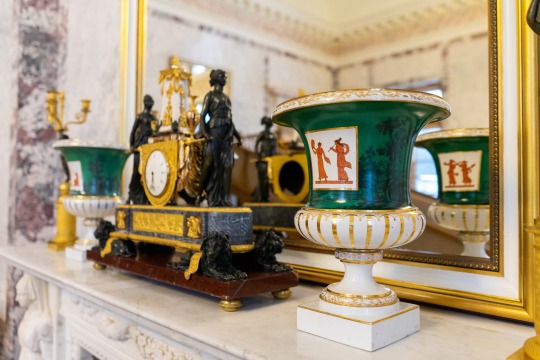
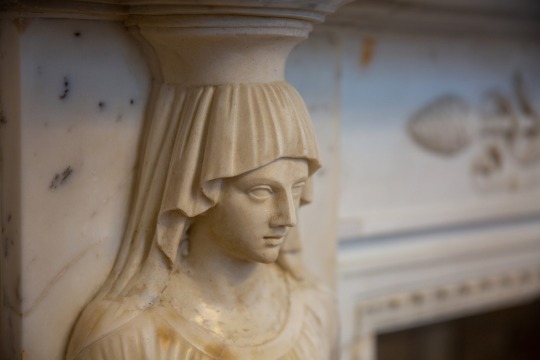
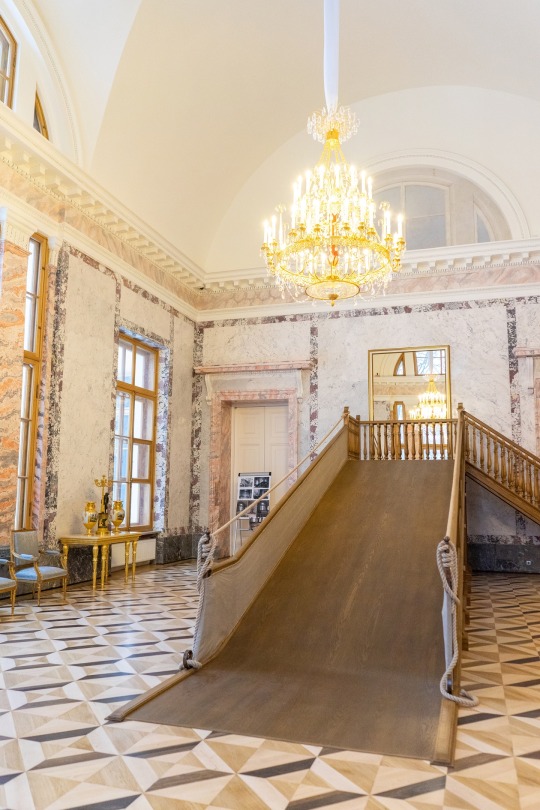

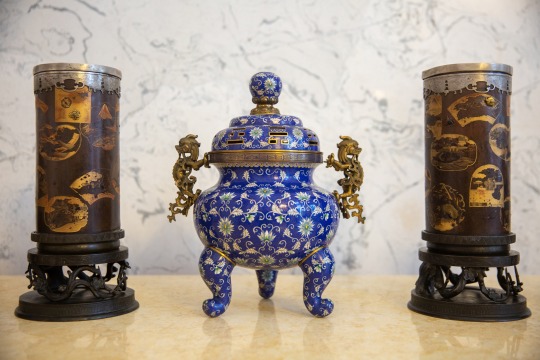
Yesterday, GMZ Tsarskoe Selo (the Tsarskoe Selo State Museum Preserve) published a generous photographic spread on the now beautifully-restored Mountain Hall which visitors can now walk through as part of the permanent exhibition of recreated and restored interiors in the Alexander Palace!
This part of the project to rehabilitate the Alexander Palace into part museum, and part multi-resource centre has been much discussed. This room, with its wooden slide or "mountain" as slides are known in Russia has been meticulously and painstakingly restored and partially recreated using old photographs, drawings, inventories from the museum period, and other archival materials. Objects which once stood in this room on the fireplace mantle, and on console tables are now back in their rightful place. The fire-screen is the original, just reupholstered. The furniture also comes from GMZ Tsarskoe Selo's own collection. The lunettes of faux sky have also been brought back to life.
Below, I've translated (using Yandex Translate, which is better than Google by far) the article which GMZ Tsarskoe Selo published yesterday on the opening of the Mountain Hall. I translate from the original Russian as I know not everyone in the group speaks the language or can read/write it so this is for ease of reading and also for those members who are not as tech-savvy as well.
So please enjoy the article, and the wonderful photographs which also include some that I added for a comparison of how the room was once, and how it comes to us today.
Also, let's not forget the monumental work that has been done thus far. There is still work being done and it is just wonderful, and a miracle that it is being done at all. It's important to remember these workers and the many companies/firms which have had a hand in this project.
________________________________________________________________
RESTORATION OF THE HALL WITH A SLIDE COMPLETED.
"The restoration of another interior of the Alexander Palace has been completed in the Tsarskoye Selo Museum-Reserve. The hall with a slide is part of the front suite; its decoration was made at the end of the 18th century according to the project of the architect Giacomo Quarenghi. For the first time in 80 years, visitors will see the hall as it was before the start of World War II. This is the fourteenth interior opened to the public during the large-scale restoration of the Alexander Palace. From February 2, the Hall with a slide will be included in the excursion route.
The personal apartments of Emperor Nicholas II and his wife Alexandra Feodorovna in the Alexander Palace became available to visitors in August 2021. The restoration of the palace began in 2012 and is carried out mainly at the expense of funds allocated by the Ministry of Culture of the Russian Federation, as well as at the expense of the museum's own funds. The decoration of the Hall with a slide was recreated with the support of the Transsoyuz Charitable Foundation.
– For us, the opening of the Hall with a slide is a continuation of the grandiose restoration epic of the Alexander Palace. I am glad that patrons took part in recreating the decoration of this unusual interior. Let me remind you that the Agate Rooms were restored at the expense of the Transsoyuz Foundation, the lapis lazuli portals of the Lyon Hall of the Catherine Palace were recreated,” says Olga Taratynova, director of the Tsarskoye Selo Museum-Reserve.
The hall with a slide got its name due to its main compositional element: in 1833, at the behest of Nicholas I and Empress Alexandra Feodorovna, a roller coaster brought from the Anichkov Palace was installed here, which was presented to the imperial children by their grandmother, Dowager Empress Maria Feodorovna. The children of the imperial couple rolled down the hill on rugs. The hill, having undergone repairs in 1843, was in the hall for almost a hundred years, until 1941.
The interior restoration project was developed by the specialists of the Architectural Bureau "Studio 44"; the restoration of the interior and the reconstruction of the slide according to their own project was carried out in 2019-2021 by the specialists of PSB ZhilStroy.
The interior, like other halls of the front suite, has retained some elements of the original decoration. In the process of work, the artificial marble of the walls of light gray and lilac shades, typeset parquet and a fireplace were restored; Based on historical photographs, a picturesque frieze was recreated imitating artificial marble, as well as oak door and window fillings.
While working in the lunettes (architectural spaces in the shape of a crescent), a genuine oil painting on canvas imitating windows was discovered under late painting, it was cleared and the losses made up. During the restoration of the ceiling, it became clear that the rosette in its center, which was considered to be stucco, is a metal, genuine one, which appeared in the hall, most likely during the renovation of the interior in the 1840s; it was dismantled, put in order and installed in its place.
The project of manufacturing a chandelier according to a historical model was developed by specialists from the Tsarskoye Selo Amber Workshop; complex and painstaking work on creating a copy of a chandelier for 40 candles was performed in the Yuzhakova Studio workshop.
The exposition includes: furniture (from the museum's collection); decorations made of bronze and porcelain, including paired porcelain vases on the mantelpiece and a mantel screen, which historically come from this interior; bronze clock and candelabra with figures of Orpheus and Eurydice.
Initially, in archival documents of 1796–1809, this interior was called the First Front Room. According to the project of Giacomo Quarenghi, the walls were finished with multi-colored "false" marble and decorated with pilasters with capitals. The room was heated by a "piece tiled" stove with copper and iron doors. The floor was oak parquet. The ceiling was painted "in stucco work" by the painters Giacomo and Ferrari.
In 1809, the New (Alexander) Palace was transferred to the Tsarskoye Selo Palace Administration. In the inventory for this interior, the replacement of structural elements and the correction of painting and "false" marble are indicated.
The furniture set of the First Front Room consisted of four gilded console tables with marble boards, eight gilded armchairs and 12 chairs. On the wall hung a large mirror in a gilded and painted frame. Two crystal girandoles were used for illumination.
In 1833, at the behest of Emperor Nicholas I and Empress Alexandra Feodorovna, a roller coaster was installed in this interior. The ceremonial hall “where the Rolling Hill”, located between the Portrait Hall and the Library, eventually began to be called the “Gorkovy”, and then the Hall with a slide. In 1836, a bronze chandelier with 40 pipes was sent to light the Hall with a slide.
In the 1840s, repairs were made in the Hall with a slide, connected with the installation of "warm floors" - heating according to the so-called Amosov system. During this period, the ceilings in the Hall with a slide were whitewashed, a marble fireplace was made, the parquet was replaced, and the rolling hill was remade by the carpenter Bolgagen. In the report of the painter Vdovichev, submitted to the Tsarskoye Selo Palace Administration in April 1843, it is indicated that he was “... in the New Palace in the Front Rooms, painting in friezes under fake marble painting.”
Vsevolod Yakovlev, director of the Association of Palaces and Parks of Detskoye Selo, wrote about the use of the roller coaster: his children rolled off her on the rugs. In the last reign, during ceremonial breakfasts and dinners, an orchestra was located near the hill; under it, bicycles of Nicholas II and his children were usually kept. Today, toy cars are placed here ... and two carriages with bicycles, presented by someone to the son of Nicholas II."
________________________________________________________________
Photograph Credit: Tsarskoe Selo State Museum Preserve (GMZ Tsarskoe Selo).
________________________________________________________________
Please enjoy the article and information, as well as, the photographs! Also, if you'd like to share and/or re-post these photographs elsewhere PLEASE credit GMZ Tsarskoe Selo, accordingly. Thank-you!
#alexander palace#gmz tsarskoe selo#mountain hall#russian empire style#neoclassical style#giacomo quarenghi#18th century#restoration#romanov#tsar nicholas i#tsar nicholas ii#transsoyuz charitable foundation
113 notes
·
View notes
Text

Alexandra Memorial Chapel at the Alexander Palace
28 notes
·
View notes
Text
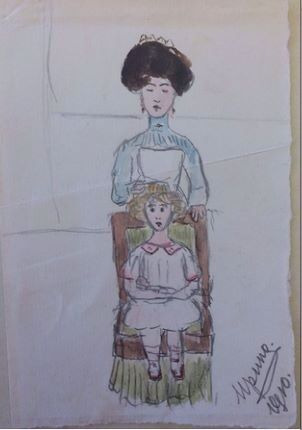
1910 drawing by Irina Alexandrovna, found in the girl's classroom at the Alexander Palace. I'm not sure, but I think this is her and her mom Xenia.
#alexander palace#irina alexandrovna#drawing#xenia alexandrovna#romanovs#romanov#romanov sisters#childrens drawings#so cute#1910s#1910
21 notes
·
View notes
Photo
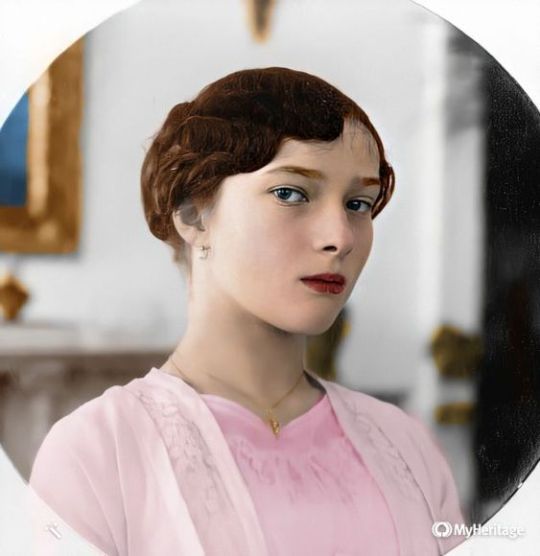
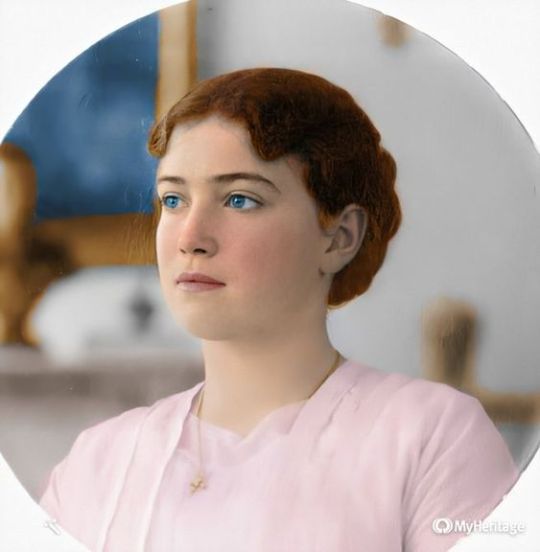
Grand Duchesses Tatiana and Maria in their formal photographs, 3rd November 1914. Coloured by me.
11 notes
·
View notes
Text
A Short History of the Palace
The Alexander Palace was ordered by Catherine the Great for her grandson, the future Alexander I. She began to plan for the building when he was quite young and intended to present it to him when he became an adult. She enjoyed discussing his future palace with the young Alexander and invited him to draft his own ideas for it.
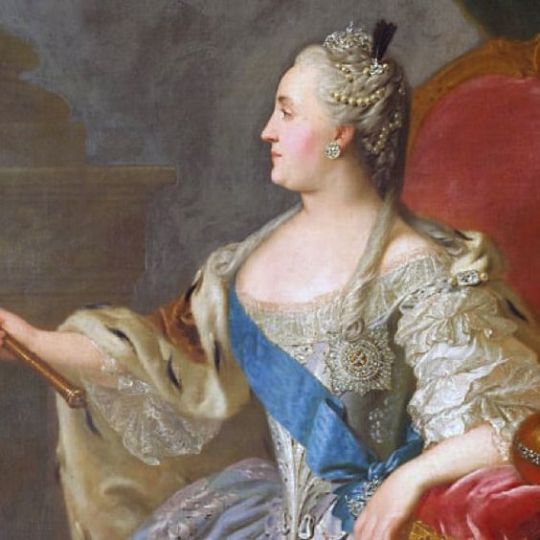

Giacomo Quarenghi was the architect of the palace. He was born in Bergamo, Italy in 1744 and died in St. Petersburg in 1817. Quarenghi came from a family of artists. He was originally trained as a painter and had exceptional drawing abilities. He travelled throughout Italy, England and France studying architecture. Quarenghi had been deeply influenced by the Palladian style he saw in his native region around Venice during his youth. He was also impressed by the latest trends in Neo-classical architecture being built in France and the earlier, chaste designs of the English architect, Indigo Jones. Catherine invited Quarenghi to Russia in 1779, when he was thirty.
Physically Quarenghi was short and ugly. He was ridiculed by his critics for his height and appearance. He was clumsy and had a strange booming voice. Quarenghi had 13 children, some of whom lived in Russia and others who stayed in Italy.
Immediately upon his arrival in Russia the Tsarina put Quarenghi to work and commissioned many designs from him throughout her reign. He was one of her favorite architects. He was a master draughtsman and produced splendid sepia plans for the palace for Catherine which still survive.
Originally the Alexander Palace was planned for St. Petersburg. The first designs, (above) which were intended for an urban environment, clearly show a more ornate facade and a complex interior plan. At some point Catherine decided to build Alexander's palace in Tsarskoe Selo and simplify the plan. These changes went through several stages as plans for the palace neared reality.
Catherine selected a spot near her own residence in the Catherine Palace for the building. The site was a low hill on the other side of the palace park. Moving the location of the palace from the city to Tsarskoe Selo changed many of design requirements for the building. In Petersburg the palace had been designed a year-round Imperial residence; in Tsarskoe Selo the palace would function as a summer home, to be used only a few months out of the year. These circumstances reduced the need for expensive interiors and embellishments intended to impress the public. The palace plans were also modified to fit the more relaxed atmosphere of a summer residence.


Following the practice of the times, in 1792 the Imperial Court placed an advertisement in the St. Petersburg newspapers requesting bids from private contractors to build the palace. The selected firm was placed under the supervision of the Russian architect Nilov, who had been given the assignment of translating Quarenghi's designs into reality. He worked with Minchacci, Rusco and others. 286,000 rubles was paid to the contractor in installments which was to be fully paid by autumn of 1794. The building of the palace presented a number of challenges related to the site. Underground rivers which passed beneath the surface of the site caused the building to shift as it was going up. Major cracks developed in the main vault of the Semi-Circular Hall which can still be seen today. The builders made a number of on-the-spot changes to the design to accommodate problems like this that emerged during construction. A large terrace was built outside the garden entrance of the building to support and reinforce the vaults of the central halls. The contractors who put up the building had made a fixed bid for the construction. Delays and increased building costs came out of potential profits and they were anxious to put up the building as quickly and with as few complications as possible.
The palace foundations are of stone, but elsewhere the Alexander Palace is almost entirely constructed of brick. Millions were required to build the palace and they were made in the immediate vicinity of the of Tsarskoe Selo from local clays. This was a subject of some concern for Catherine. She strictly ordered the protection of local forests for fear the builders would strip the trees around Tsarskoe Selo to fire their kilns and possibly ruin her vistas.
The original bid for the construction of the building did not include funds for the interior decoration. The firm constructing the building did not have responsibility for the interiors and this assignment was given to an international team of British, Russian and Italian craftsmen. But as the construction of the building progressed Catherine found herself pressed for funds, and continued scaling back the interior decoration of the palace. This was not seen as a serious problem, the Empress felt Alexander could make his own additions later according to his own tastes.
Some furniture for the palace was ordered new, but most of it was assembled from other palaces. For example, a number of things were brought from the seldom-used Tauride Palace. Catherine made other selections for Alexander's palaces from her own residences.
At first, the exterior of the palace was left as exposed brick. It took a number of years for the brickwork to dry out and final stuccoing and painting could not safely occur for some years. The "New Palace", as it was then called, was completed and presented to Alexander in June 1796. He and his wife moved in on June 12, 1796. The construction had taken almost four years. Catherine greeted the then sixteen-year-old boy and his new wife, Elizabeth of Baden, on the steps of the palace with bread and salt, traditional gifts of blessing for a new house. Alexander had but a short time to enjoy the palace before the death of his grandmother in November of the same year. This event significantly changed the circumstances of his life and he came under the control of his father, the new Emperor Paul I.
During Paul's reign the palace was stuccoed and painted. It seems that the building was painted yellow and white from the beginning, although the original color was deeper and more intense that the hue we see today.
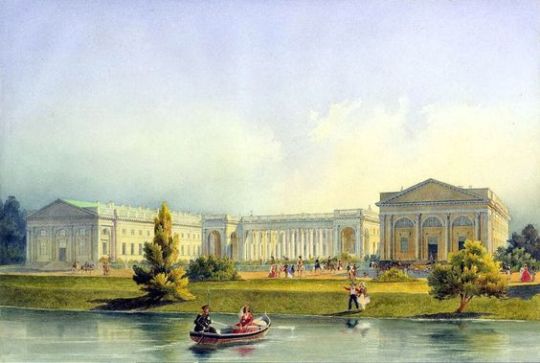
Paul was unpopular with a wide segment of society and was assassinated in the Mikhailovski Castle in St. Petersburg. Some claim Alexander was implicated in the murder, who then succeeded his father on the Russian throne. During his reign Alexander preferred to live in the Catherine Palace over the Alexander Palace when he was in Tsarskoe Selo. This does not mean he neglected the Alexander Palace, which required a great deal of maintenance in this period. In 1809 600,000 rubles had to be allocated for repairs to the building and the building's contents were fully inventoried for the first time.
Alexander and his wife were childless and he decided to designate his second brother, the future Nickolas I, to succeed him. He offered the Alexander Palace to Nickolas and began the tradition of making the Alexander Palace the Heir's semi-official summer palace in Tsarskoe Selo.
The palace retains the indelible mark of Nicholas I and his times. Nicholas had a large and growing family. Although he has a reputation for being a harsh ruler, when outside of governmental affairs he was a sentimental, family oriented man. The Alexander Palace was his favorite residence and he doted on the building, its furnishings and grounds. Many of the changes made to the palace reflect Nicholas' attitude toward the palace as his private home. For example he had special kitchens built within he palace so he could order favorite fast foods when he wanted them. He even did some of the cooking himself. Nicholas personally planted flower beds and made the final decision regarding the placement of each painting and piece of furniture. After becoming Tsar Nicholas' continued to favor the Alexander Palace and stayed there often.
Nicholas chose the Alexander Palace for some of the important events of his reign, including the first telegraph transmission in Russia, which the Tsar made from the palace.
Following in the footsteps of his elder brother, Nicholas gave the use of the Alexander Palace to his eldest son and heir, the future Alexander II, on the occasion of his marriage. This lead to a complete redecoration and updating of the palace. Technical advancements in lighting, heating and cooking meant changes went beyond simply new fabrics, furniture and carpets. The palace was completely modernized and brought up-to-date in the mid 1840's. Later in life, after her husband had become Tsar and taken on a mistress, Alexander's wife, the Hessian Princess Maria Alexandrovna, decided to live in the Alexander Palace year-round. This presented problems because the palace had been built as a summer residence. It lacked the double-paned windows and double floors necessary to keep a building warm during frigid Russian winters. New heating systems were installed in the parts of the palace occupied by the Tsarina.
As Tsarevich the future Tsar Alexander III and his wife Maria were presented the use of the Alexander Palace at their marriage by his father. His mother continued to live in the palace and Alexander's use of it was limited until her death in the palace. In 1874 a part of the palace was remodelled for the honeymoon of Alexander II's only daughter, Maria, to Alfred, the son of Queen Victoria of England.
Alexander III's wife Maria Fyodorovna loved the Alexander Palace passionately. She adored the parties and elegance of Tsarskoe Selo over the austerity of her husband's own preference, Gatchina. Two of Maria and Alexander's sons, the future Nicholas II and his brother George, were born in the palace. As they grew older both boys continued to have apartments in the palace and used them whenever they were in Tsarskoe Selo.
When Nicholas ascended the throne in 1894 he and his new wife Alexandra decided to make the Alexander Palace their principal residence. As a result, Nicholas II and his wife made the most significant changes to the building since the reign of Catherine the Great. Extensive renovations were made to the building and new systems, such as electricity, telephones, washing machines, elevators and flush toilets, were installed. One whole wing of the palace was completely redone in a strikingly domestic and luxurious way. Nicholas and Alexandra's principal objectives were to create a comfortable and elegant family home.
Later changes to the palace in the reign of Nicholas II included the erection of the two finest Imperial Art Nouveau interiors in Russia and delightful rooms created for the Tsar's children.
At the time of the Russian Revolution and the exile of the Romanov family to Siberia it was decided to convert the Tsar's palace into a museum which documented the life of the Romanovs in the palace throughout the 19th century . Naturally, the strongest emphasis was placed on events in the reign of Nicholas II. Soon after the departure of the Romanovs for Tobolsk in August 1917 parts of the palace were opened to the public by it's first curator, Lukomskii. After the murder of the Romanovs in Yekaterinburg in July 1918 some of their personal possessions that hand followed them to Siberia were returned.
The museum in the Alexander Palace showcased the interiors as closely as possible to their state in August 1917. They appeared as if the Tsar and his family had just left and might return at any moment. The tragedy of the story of the Romanovs and the intimacy of the private rooms created a lasting impression on those who saw them, creating sympathy for the Tsar and his family and this ran counter to the intentions of the Soviet Government. In 1919, soon after the Bolshevik coup, a part of the palace was converted into a Children's Colony, but this experiment proved to be a disaster and these rooms were returned to the museum. Extensive restoration enabled these rooms to be reopened to the public. In the mid-1920's Nicholas' and Alexandra's historic rooms in the Winter Place, which had been open as a part of the museum there, were closed and their furnishings disbursed. Some items were transferred to the rooms of the Alexander Palace where they were merged into the collection.
The Alexander Palace museum proved to be one of the most popular museums in Russia and was a must see for all foreigners who made it to the new Soviet state. Unfortunately, the government had an indifferent, even hostile attitude toward the "Romanov Museum". Officials began to pilfer objects and furnishings from the palace for sale to foreigners and for the use of party officials. Later the secret police demanded the use of a part of the palace as their private resort. In order to prepare for this transition these rooms were emptied of their contents and the treasures sold off in stores for foreigners in Russia and by Hammer in the USA.
Throughout the 1930's there were frequent threats by the government to close the rest of the museum and sell off its treasures. Somehow, the museum workers and public managed to dissuade the government from this step and the museum operated right up until the beginning of World War II.
At the outset of Hitler's declaration of war on the Soviet Union in 1941 the Director of the Alexander Palace Museum, A. M. Kuchumov, received orders to evacuate around 300 objects from the path of advancing German troops. This was a tiny selection from a collection totalling tens of thousands of objects. Frantically, and with great courage and improvisation, the museum workers were able to pack and ship out of harm's way a significant part of the museums' collection. Sadly, thousands of precious treasures and items of extraordinary historical value were left behind.
When the Germans occupied the town they immediately looted the palaces. What they didn't cart away for use in their military quarters was shipped off to Germany and Spain, where many of the palace treasures remain to this day. The palace itself was converted into an SS hospital and was heavily protected by German troops. An SS monument and graveyard decorated with Nazi symbols was erected in the palace courtyard. The palace was heavily damaged during the war by shell fire and reckless abuse by the Germans and their Spanish allies during their occupation.
Still, considering the ordeal it had been through after the war the palace was discovered by returning museum workers to be in remarkable shape. It was the best preserved of all of the suburban palaces that had been behind German lines and was chosen to become the depot for works of art returning from Siberia to Leningrad. Ambitious plans were made for the restoration of the palace as it had been before the war. At this point the government, perhaps Stalin himself, made a critical decision about the future of the palace - it was not to be a Romanov museum. The palace was to be stripped and restored as a generic 19th century palace - any restoration that presented the private lives of the last Tsar and his family were forbidden. This restoration began and interiors which had survived the German occupation were brutally stripped and destroyed. Before this work was completed Stalin changed his mind and made another decision that the museum was to be closed altogether and the building presented to the Navy for their use.
The invaluable and unique collection of the palace was dispersed among many museums. Pieces went to Pavlovsk, the Catherine Palace, the Hermitage and elsewhere. Most personal items associated with the last Tsar and his family were simply locked up and placed in indefinite storage.
In the late 1980's Suzanne Massie and Bob Atchison, with the blessing of the former curator of the Alexander Palace, A. M. Kuchumov, who had made the restoration of the palace as a museum his life's goal, appealed to the press and the city of Leningrad for the reestablishment the Alexander Palace Museum. This intense and exhausting effort proved successful and a government decision was made to re-establish the museum. The only stipulation was the successful relocation of the naval institution occupying the building to an acceptable location.
Work continued to make the museum a reality. Several years of research on the palace under the direction of Kuchumov were financed by Bob Atchison. In 1994 the Alexander Palace website was established to help promote interest in the monument. The results of the research are shared with the public for free on the website.
3 notes
·
View notes
Text
Two newly discovered photographs of Grand Duchesses Olga and Tatiana in 1913
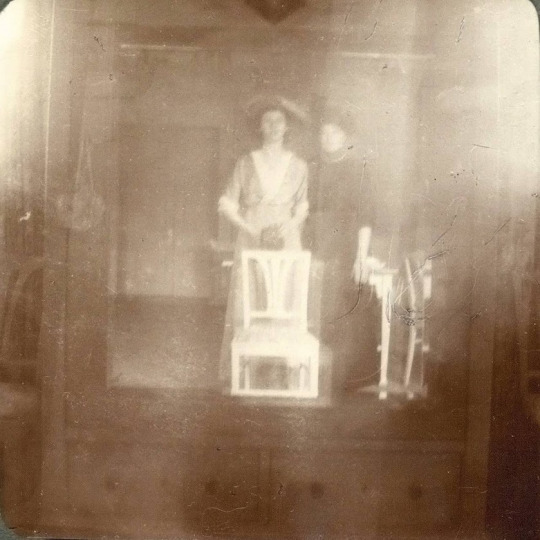
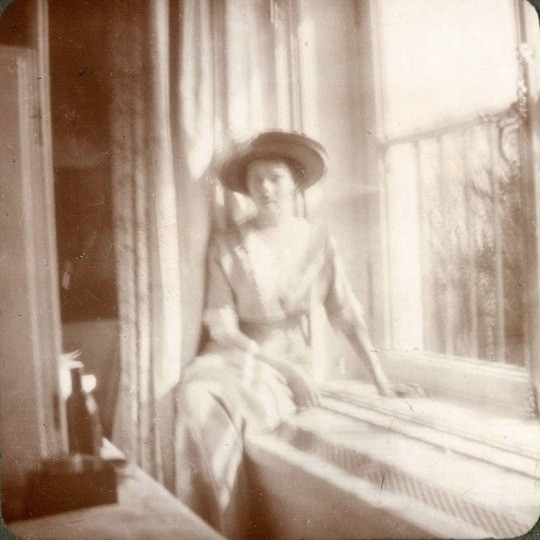
Photo 1: Tatiana standing on the left, Olga on the right taking a mirror selfie in their mirrored wardrobe (a new photo to add to the collection of Romanov selfies!)
Photo 2: Tatiana sitting by the balcony window, Alexander Palace.
These photos were taken the same day as these already known photographs, completing the scene. Spring, 1913.



As always, these new findings are from Ilya, @ LastRomanovs on flickr. These discoveries are thanks to his amazing and tireless effort to digitise all of the Romanov's albums in high quality for viewers to view online.
Source: LastRomanovs, GARF f.611 op.1 d.98 pp. 3-8
#Olga Nikolaevna#Tatiana Nikolaevna#big pair#new photos#rares#Olga Romanov#Tatiana Romanov#Alexander Palace#1913#selfies#Russian history#Romanov sisters
19 notes
·
View notes
Text
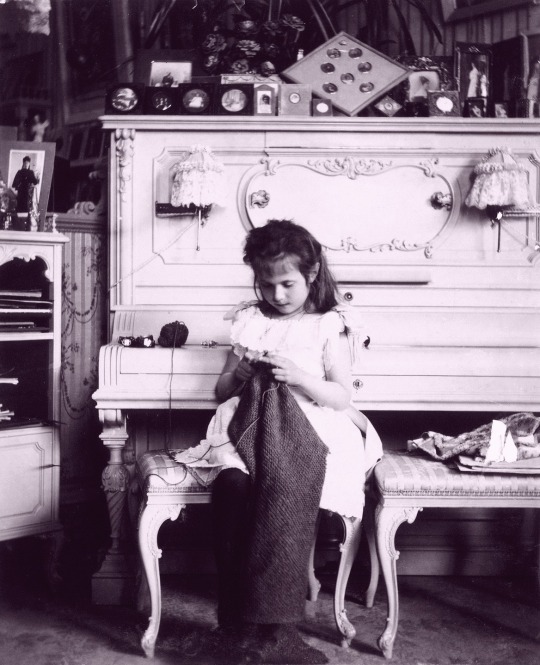
Anastasia in the Mauve Room
26 notes
·
View notes
Photo

Grand Duchess Xenia Alexandrovna of Russia, the eldest daughter of Emperor Alexander III of Russia and Empress Maria Alexandrovna of Russia and sister of last Russian Emperor Nicholas II, 1900.
#Grand Duchess Xenia Alexandrovna of Russia#Grand Duchess Xenia Alexandrovna#Grand Duchess Xenia#Grand Duchess Xenia of russia#romanovs#imperial russia#Imperial Family#russian imperial family#colored photography#history colored#alexander palace#mauve room#mauve boudoir
81 notes
·
View notes